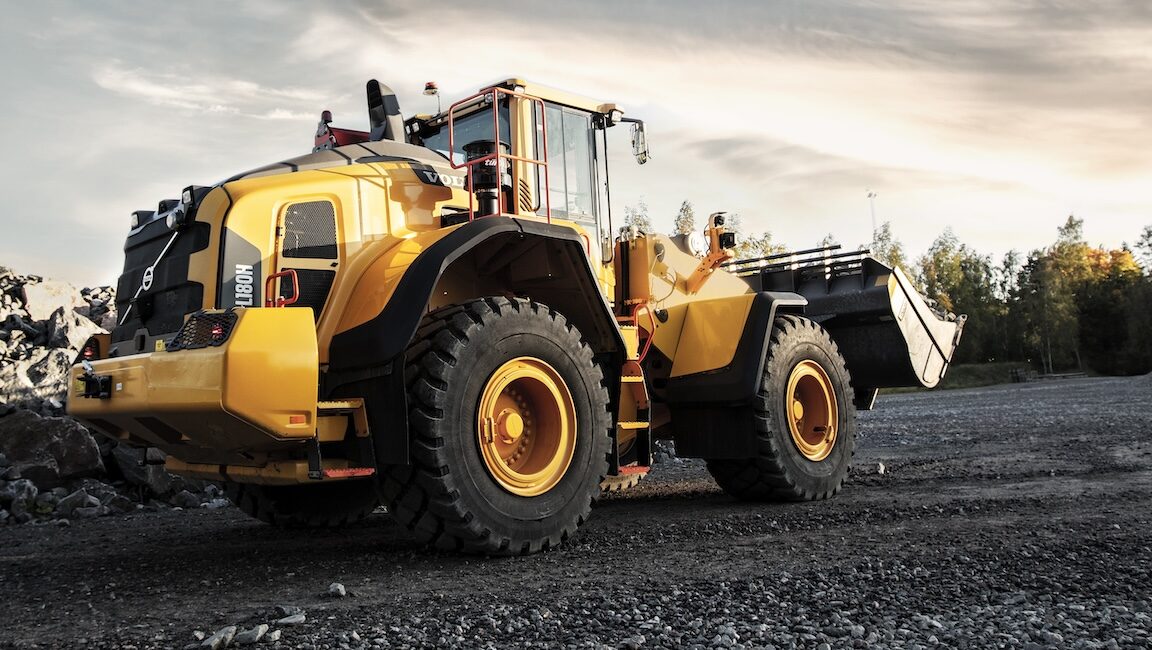comparing fuel efficiency in front end wheel loaders
How do I know if my wheel loader is efficient? As the wheel loader product manager here at Volvo, I hear that question a lot. The answer lies in your ability […]


How do I know if my wheel loader is efficient? As the wheel loader product manager here at Volvo, I hear that question a lot.
The answer lies in your ability to both cut costs and move more material per cycle at the same time. If you have a machine that does both, you’ll quickly notice the savings in lower operating costs.
To show you what I mean, we put a couple of different sized Volvo wheel loaders up against comparable models from another brand — and these were the results.
TEST 1 SCENARIO: VOLVO L150H WHEEL LOADER VS. TOP COMPETITOR
First, we put our Volvo L150H loader up against a leading competitor to see how they compared on fuel efficiency and the amount of material moved per cycle.
In this side-by-side front end wheel loader comparison, we used two operators who both ran each machine over two days. Each operator ran a machine in a short cycle loading exercise and an uphill load and carry exercise, swapping machines from morning to afternoon. Both the Volvo loader and competitive loader were outfitted with the same tires. The data was compiled and analyzed for each loader to ensure operator performance had no impact on the results.
Additional test details include:
- Material: Gravel, estimated density 1.3 tn/yd³ (1728 kg/m³)
- Fuel: Ultra-low-sulfur diesel
- Scale equipment: Mettler Toledo
Test 1 Results
- In the short cycle loading test, the Volvo L150H experienced:
- 35% higher fuel efficiency
- 28% lower fuel consumption
- 20% higher productivity
- 4% shorter cycle times
- In the load and carry test, the Volvo L150H experienced:
- 25% better fuel efficiency
- 23% lower fuel consumption
- 10% better productivity
- 5% shorter cycle times

What do the numbers mean?
While the percentage savings above may look impressive, it’s important to consider the actual dollars saved, based on projected or estimated figures, to fully grasp the potential financial benefit.
For example, we’ve calculated that with the Volvo loader you could potentially reduce your costs by 2 cents per ton — that may not sound like much, but the yearly savings are actually quite surprising:
| Est. Hourly Production | 600 tons/hr |
| Hours Worked per Day | x 8 |
| Est. Daily Production | 4,800 tons/day |
| Production Savings | $.02/ton |
| Daily Savings (x 4,800 tons) | $96/day |
| Weekly Savings (x 5 working days) | $480/wk |
| Weeks Worked per Year | x 48 |
| Total Yearly Savings | $23,040 |
It’s also important to note that each manufacturer’s front end loader was equipped with a similar sized rehandling bucket; however, the Volvo-designed bucket had a longer floor which helped penetrate the stock pile better. The convex sides also helped with material retention in the bucket. These two factors made loading the Volvo bucket easier. Lost aggregate is waste, and the competitive machine experienced some of that during the tests.
TEST 2 SCENARIO: VOLVO L220H WHEEL LOADER VS. TOP COMPETITOR
Next, we put a Volvo L220H loader up against a leading comparable competitor using the same testing setup as Scenario 1. Here are the results for this side-by-side comparison of larger wheel loaders:
Test 2 Results
- In the short cycle loading test, the Volvo L220H experienced:
- 30% higher fuel efficiency
- 22% lower fuel consumption
- 10% higher productivity
- 8% shorter cycle times
- In the load and carry test, the Volvo L220H experienced:
- 30% better fuel efficiency
- 30% lower fuel consumption
- 10% better productivity
- 10% shorter cycle times

What do the numbers mean?
Again, I recommend putting some projected numbers against these percentages.
So, for example, if you experience 20 tons per hour in additional production, that might equate to:
| Production Increase | 20 tons/hour |
| Hours Worked per Day | x 8 |
| Days Worked per Week | x 5 |
| Weeks Worked per Year | x 48 |
| Additional Tons per Year | 38,400 |
THE BOTTOM LINE ON WHEEL LOADER EFFICIENCY
When you’re looking at wheel loader efficiency across manufacturers and trying to understand which machine truly performs better, be sure you look at both fuel consumed per hour plus the amount of material the loader can move for that amount of consumed fuel — then do the math to get a real-world idea of the potential savings.
Some OEMs may tell you a loader burns less fuel, but it may also move less material or experience long, costly cycle times, negating any real savings. Be sure to ask the right questions to get the most efficient front end loader for your type of work.
If you have questions about the efficiency of your current wheel loaders, reach out to a Volvo dealer and they can help you crunch the numbers.
Categories: Construction Equipment, Fuel Consumption


